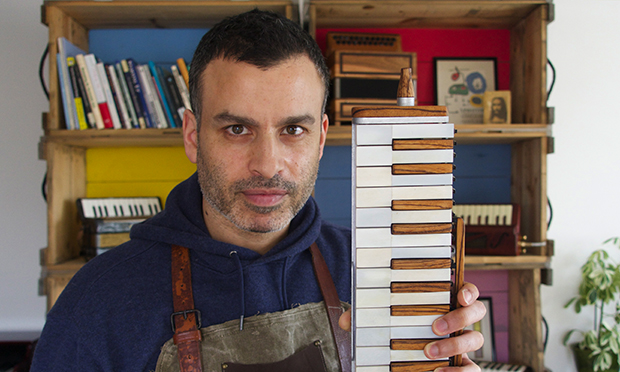Musician creates the first ever 3D-printed melodica
As the old saying goes, if it ain’t broke, don’t fix it. But if you haven’t got anything to fix in the first place, then why not make something yourself?
That’s exactly the mode of thinking that led Daren Banarsë to become the first person to 3D print a melodica, originally a child’s instrument that looks like a cross between a harmonica and a piano.
Banarsë took up the melodica when he became disenchanted with the piano, realising its design wasn’t exactly complementary to the human form. He found it more comfortable to play a hand-held instrument.
“Eventually I wanted to play something that works well with the human body, so the melodica was the one,” the 42-year-old says.
With a penchant for Irish music, Banarsë had concerns about turning up to the pub with something that looked as though it had been prised from the hands of a toddler.
“We’d sit around a table and play the old tunes, but the image just isn’t right and also it’s slightly shrill sounding,” he says. “So I thought that I just had to build one and it’s got to be my next project.”
His tenacity meant that he couldn’t give up until he’d realised his dream, he had no choice but to make one and after a journey lasting six months he finally unveiled his labour of love.
The keys are coated in ivory and the wood is recovered from an old piano. And as he brings it to his lips to give it a blast, it’s clear he hasn’t sacrificed substance for style. Sitting at his kitchen table and closing my eyes, I could almost be in a Dublin boozer sitting next to The Pogues.
Attempts at buying a 3D printer and taking a complete DIY approach failed, and he eventually had to digitally render each component and send it off to a company in the Midlands.
Banarsë recalls: “Even just printing out one of the keys on the cheaper printer was just a mess, there were technical things that just didn’t work with it and it would always be slightly off. I didn’t realise how exact a melodica had to be. “It needs to be airtight and there’s so many points that need to fit perfectly.”
The finished article makes the piles of shop-bought melodicas that lie in his flat, a converted shipping container in Poplar’s Trinity Wharf, look like they might have been purchased at the Early Learning Centre.
Banarsë’s instrument is the product of months of painstaking research and a passion to make the perfect instrument. Having proved it can be done, he feels it won’t be long until 3D printing will be in regular use.
“It’s definitely the future,” he adds. “We’ll all soon have our own printing rooms, the technology is there.”

